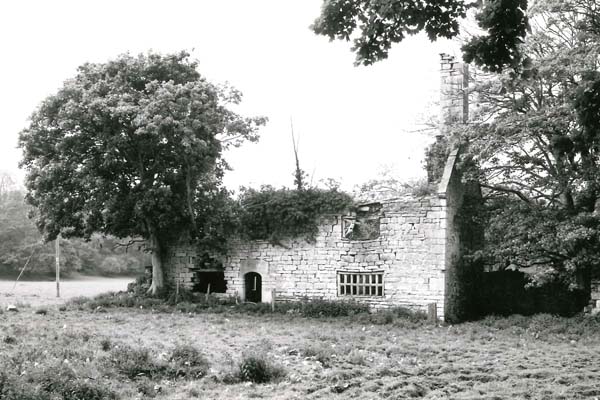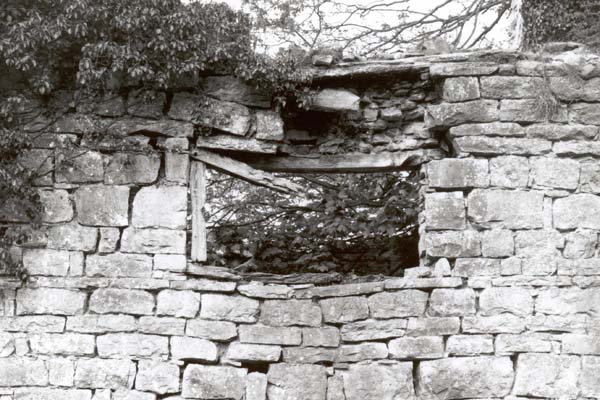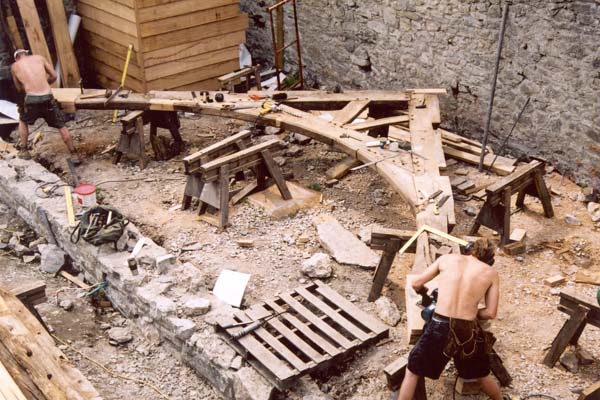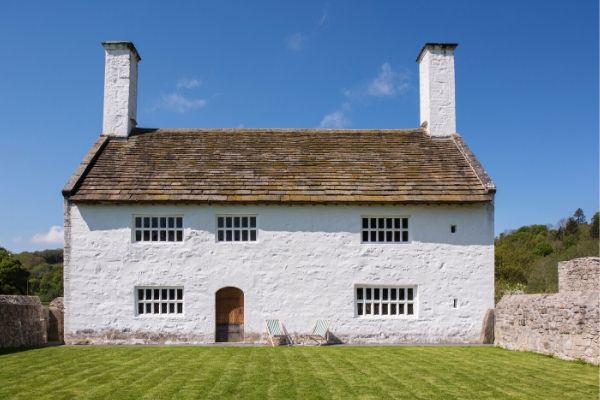‘Hiraeth’ – Welsh for yearning or nostalgia.
As far as I know I have no Welsh blood in me – but ever since my parents bought a small farmhouse in the Snowdonia National Park I have felt drawn to the remote hills and valleys of Wales. The house, purchased from a local farmer who had been born there, was without electricity, mains drainage or running water. And it still is – and lived in by my 82 year old father. Spending holidays here from the age of 6 clearly instilled in me a love of old buildings and how life was lived in them.
I was first contacted about Dolbelydr by Denbighshire County Council’s Conservation Officer, Phil Ebbrell. As a keen Landmarker himself, he felt that we were the best, perhaps only, organisation that could take it on, given its extreme state of dereliction.
 Derelict Dolbelydr.
Derelict Dolbelydr.
For those that haven’t had the pleasure of staying here, it sits in a secluded valley in the Vale of Clwyd. You are more likely to see a herd of deer than another human being. When I visited Dolbelydr for the very first time, the sky was black, rain was falling as stair rods, and the family refused to get out of the car, leaving me to explore on my own. There was no vehicular access to the house, the last occupant in the early 20th century having accessed it by crossing the adjacent river on stilts.
There in the valley bottom stood a completely roofless shell, with collapsing walls and large sycamore trees growing where there had once been rooms. Surely this was too far gone to be restorable? But despite the weather and appalling condition there were clearly features of real interest. The walls were of coursed blocks of the local hard limestone, and over the front door was single massive slab, shaped to give a semi-circular head – a so-called ‘Cyclopean’ doorway. And astonishingly the windows were still the originals dating back to 1580 with thick oak mullions and transoms, and as many as 14 lights to the ground floor hall window.
 The original windows dated back to 1580.
The original windows dated back to 1580.
 The solar roof was restored by skilled craftspeople.
The solar roof was restored by skilled craftspeople.
Cutting a long story short, after the usual trials and tribulations, Dolbelydr was acquired, and restored, with great attention paid to retaining as much of the salvaged fabric as possible. Craftsmanship exudes from it – the hand-blown glass in the windows; the decorative door hinges wrought by an artisan blacksmith; and oak everywhere both old and new right down to the hall screen with its moulded timbers created by dragging a metal scratch stock down all the studs to create the delicate shape. The result is such an evocative, ancient house which in its unspoilt and peaceful setting is sheer delight.
 Lovingly restored, Dolbelydr sleeps up to six guests.
Lovingly restored, Dolbelydr sleeps up to six guests.
At the edge of the field, the River Elwy flows by, and on the opposite bank are the remains of an ancient medieval chapel known as Ffynnon Fair or St Mary’s Well, and it does indeed contain an eight-pointed star-shaped basin within which the holy spring waters rise. Even Dolbelydr’s name, which means ‘Meadow of the Rays of the Sun’ evokes romance.
So I for one have that hiraeth, that longing, to return to Dolbelydr and soak up its atmosphere once again.